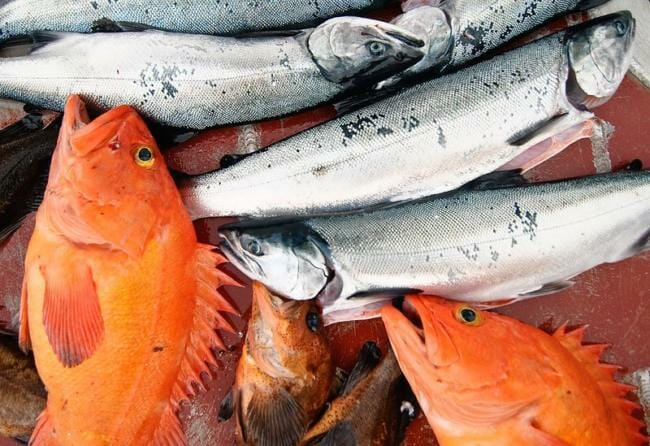
Fishing for a popular species of rockfish has been closed for the entire year in Southeast Alaska.
The Alaska Department of Fish and Game closed the sport, commercial, and personal use fisheries for yelloweye rockfish effective 12:01 a.m. on January 1.
The ban includes all six species of “nonpelagic” rockfish, however, the yelloweye, often called “red snapper,” is by far the most prized.
Bob Chadwick is the sportfish coordinator for Southeast Alaska. He says the populations of nonpelagic species are down dramatically, despite years of restrictive bag limits.
“Despite conservative management actions that we’ve been taking to reduce the harvest of nonpelagic rockfish, we’re seeing a decrease in abundance of 60-percent,” said Chadwick.
The nonpelagic species include the quillback, tiger, silvergray, copper, and china rockfish.
Nonpelagic rockfish are as long-lived as the humans who fish for them. They reach sexual maturity at 18 years of age, and have an estimated maximum lifespan of 122 years.
The Department of Fish & Game has tried rotating closures in the past, hoping to see stocks rebound in specific areas. But it hasn’t worked. This is the first time the Department has shut down fishing in the entire region. Andrew Olsen is the state’s commercial fisheries groundfish coordinator. He says the closure could last more than this year.
“Yelloweye are the predominant species capture and they are a long-lived species and slow reproducing,” said Olson. “So it’s going to take some time to rebuild.”
Olson says other regions of the coast, down to British Columbia and Washington, have experienced declines in nonpelagic rockfish before. He hopes Alaska’s strategy of an all-out closure restores stocks to commercial levels earlier than occurred in those fisheries. Yelloweye — or red snapper — is one of the last remaining open access fisheries in the state. Olsen says it’s a good opportunity for longliners to work their gear in the winter, before the halibut season opens in March, and after it closes in November.
It’s important for local economies too. In 2019, the commercial quota for demersal shelf rockfish was 110,000 pounds. The average price for yelloweye was $1.62 per pound.
Although the nonpelagic rockfish closure is only for Southeast waters, the emergency order affects everyone who sport fishes on Alaska’s coast. The once-voluntary recommendation that every boat be equipped with a deep-water release device for rockfish is now a requirement — regardless of where you fish.
“The regulation that requires the use of deepwater release devices for sport anglers releasing rockfish is statewide,” said ADF&G’s Chadwick.
Rockfish have a swim bladder that distends when they’re brought to the surface. It prevents them from submerging on their own. Chadwick says sport anglers can stop by any ADF&G office to see the range of devices available to help get rockfish back down to deepwater again.
While the closure won’t be welcome news for people who love to fish for the large, bright-orange yelloweye, it’s not all bad news. The pelagic species of rockfish are still fair game.
“Your other big one would be black rockfish, which is not a part of this closure announcement,” said Andrew Olson. “Black bass, or black bombers, as they’re commonly called.”
Black bass, as well as dusky and dark rockfish, school in large numbers near rocky shorelines. Unassuming and abundant, bombers have saved many a fishing trip near Sitka.
